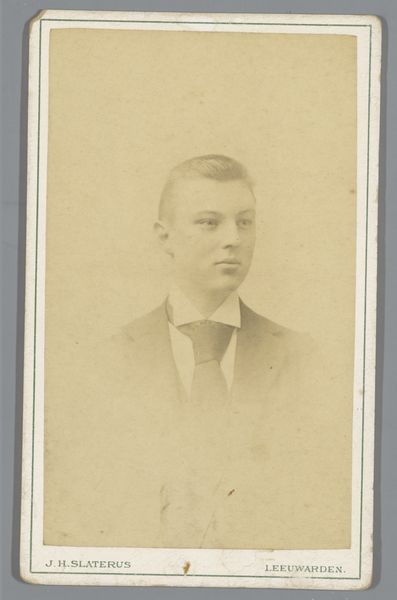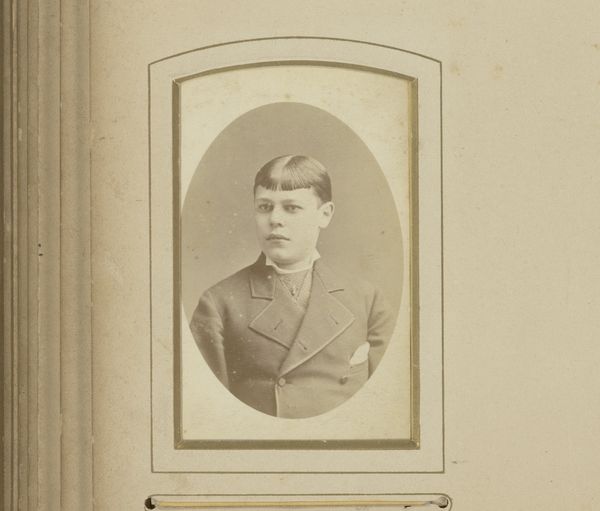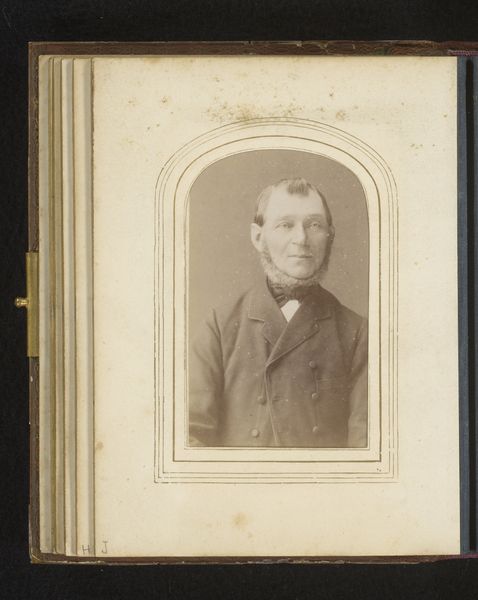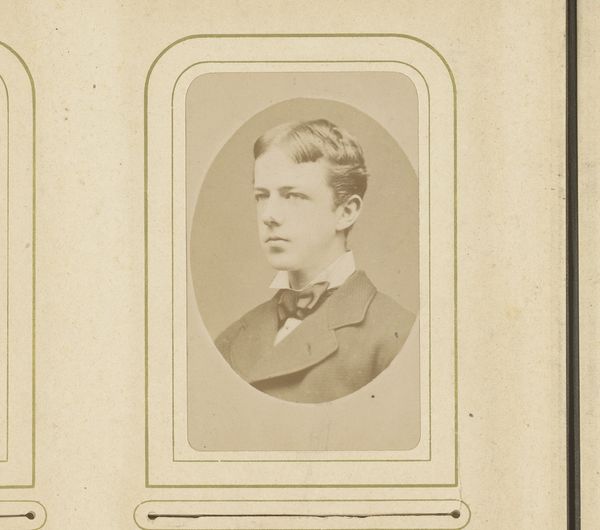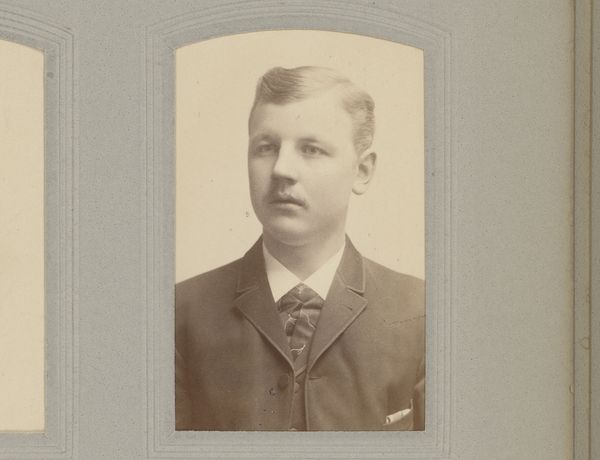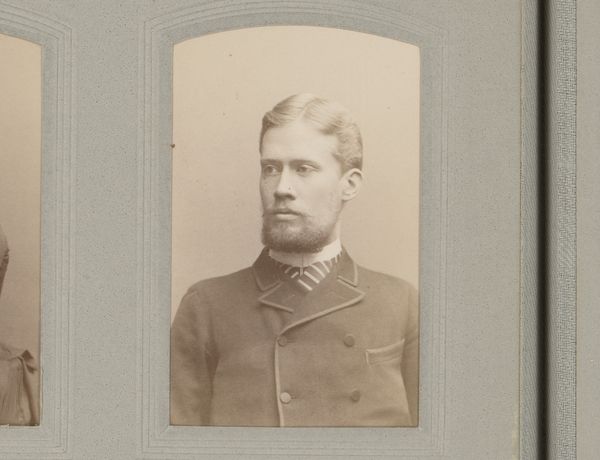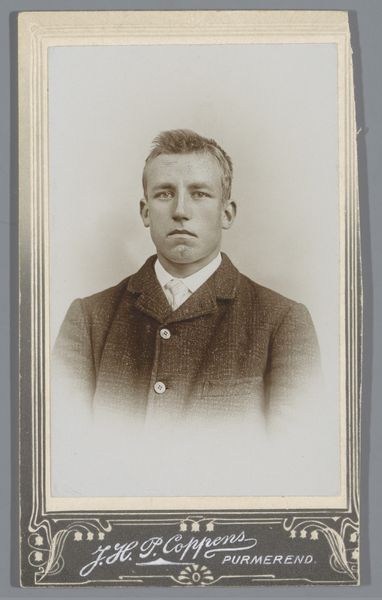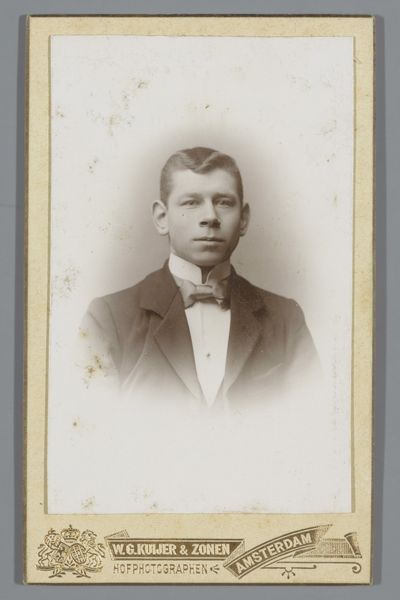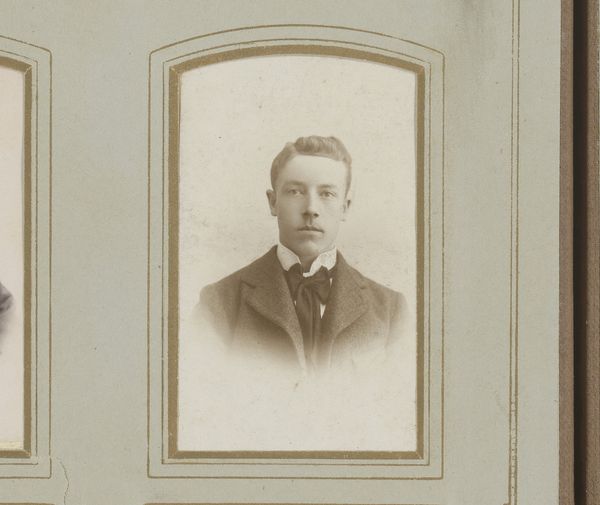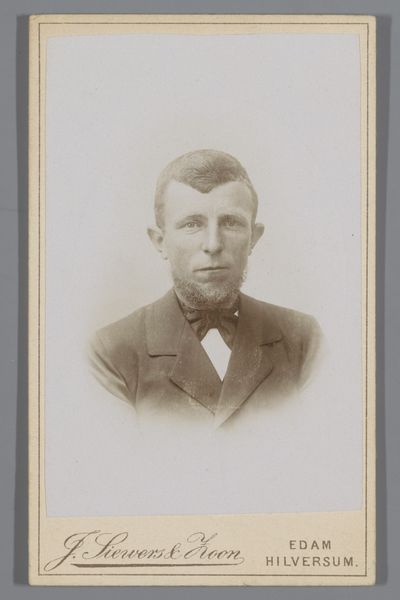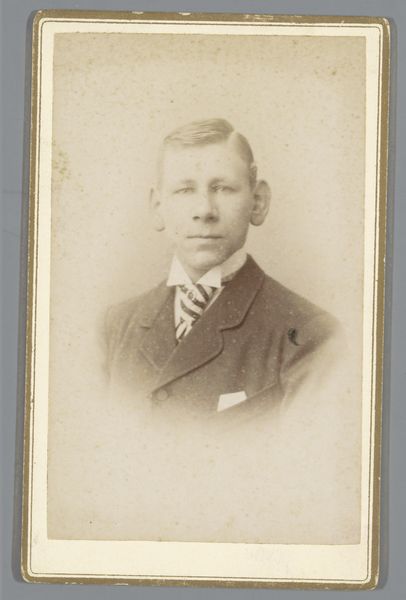
photography, gelatin-silver-print
#
portrait
#
photography
#
gelatin-silver-print
Dimensions: height 83 mm, width 51 mm
Copyright: Rijks Museum: Open Domain
Curator: This is a photograph titled "Portret van een man met stropdas," which translates to "Portrait of a Man with Tie." The gelatin silver print, attributed to Alfred Berzelius, likely dates between 1860 and 1900. What are your initial impressions? Editor: It feels so…contained. The tight framing and muted sepia tones lend an air of somber restraint, a very still and formal observation. The subtle tonal gradations are quite captivating. Curator: Absolutely. We see how portrait photography solidified in this period, catering to bourgeois aspirations. Note how the subject's attire – the tie itself – performs a kind of self-fashioning, adhering to conventions of masculinity in a rising merchant class. It says everything about conforming to social roles, particularly the modern construction of white masculinity. Editor: And there’s an interesting contrast between the crisp focus on the face and the softer details in the background, that's rendered via the limited depth of field, which enhances this sense of being 'composed'. It pushes him, formally, forward into our field of vision. Do we know much about Berzelius as a photographer? Curator: Berzelius remains a somewhat elusive figure in photography. This relative obscurity adds to the photo's resonance: It isn't just a portrait of an individual; it represents a much wider class demographic that sought out this new, bourgeois medium to project itself. It marks a change in what it meant to be middle-class: dress, pose, format – all speak to the establishment of social codes. Editor: The sepia toning and tight framing gives this such a rigid, historical feel. It’s not the portrait of an individual but a typology of masculinity from a distant world. Even if Berzelius' motivations are a mystery, that inherent element of "capture" becomes its own subject. Curator: Precisely. By framing him in this particular way, a story unfolds not just about one person but about social aspirations, technological innovation, and how photography both documented and shaped social identities. I'm always struck by the intersection between technological changes and evolving identity, especially concerning gender, and class. Editor: A single photographic instant functions as both record and carefully calibrated performance. Even beyond authorial intent, those semiotic layers resonate. Curator: Well, I walk away thinking of the impact of photographic technologies in constructing both individual and collective understandings of "self," so tied to political, gender, and class power. Editor: And I’m still admiring the sheer depth of the subtle tonal arrangements. There's a visual story told just in how those grades delineate the figure's presence within the picture.
Comments
No comments
Be the first to comment and join the conversation on the ultimate creative platform.
